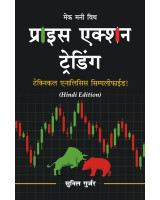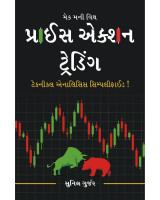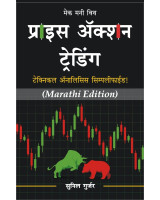Blog Post about Commodities Trading in India, List of Commodities Available for Trading in India, Commodity Exchanges...
What is Price Action Trading?
What is Price Action Trading?
Price Action Trading is a strategy that focuses on analysing historical price movements to predict future price direction. It does not depend on technical indicators like moving averages, MACD, or RSI. Instead, traders observe candlestick patterns, support and resistance levels, trendlines, and market structure to make trading decisions.
Since Price Action Trading is based on pure price data, it offers a clearer and more reliable picture of market sentiment. Traders using this strategy believe that price reflects all relevant information and that understanding price behaviour is key to successful trading.
Why Choose Price Action Trading?
-
No Lagging Indicators – Unlike traditional technical analysis, PAT does not rely on delayed indicators, making it highly responsive to market changes.
-
Better Market Understanding – By analysing price movements and patterns, traders develop a deeper understanding of market behaviour.
-
Applicable to All Markets – Price action strategies can be used in stocks, forex, commodities, and even cryptocurrencies.
-
Works on Any Timeframe – Whether you are a day trader, swing trader, or long-term investor, PAT can be applied effectively across different timeframes.
Key Concepts in Price Action Trading
To effectively trade using price action, traders rely on several important concepts:
1. Candlestick Patterns
Candlestick patterns play a crucial role in Price Action Trading. Some commonly used patterns include:
2. Support and Resistance Levels
Support and resistance levels act as barriers where price tends to reverse or consolidate. Identifying these levels helps traders make better entry and exit decisions.
3. Trendlines and Channels
Drawing trendlines helps traders determine the overall market trend. Channels indicate possible price ranges and breakouts.
4. Breakouts and Fakeouts
Breakouts occur when the price moves beyond a key support or resistance level. However, traders must be cautious about false breakouts (fakeouts), which can mislead them into making poor decisions.
5. Market Structure
Understanding higher highs and higher lows (for an uptrend) or lower highs and lower lows (for a downtrend) helps traders align with the market direction.
How to Trade Using Price Action?
-
Identify the Market Trend – Use price action signals to determine whether the market is in an uptrend, downtrend, or consolidation phase.
-
Find Key Levels – Mark support, resistance, and trendlines to spot potential trade setups.
-
Wait for Confirmation – Instead of rushing into a trade, wait for candlestick confirmations, like engulfing patterns or pin bars.
-
Manage Risk – Always use stop-loss and position sizing to manage risk effectively.
-
Backtest and Practice – Analyse historical charts and paper trade before implementing price action strategies with real money.
Final Thoughts
Price Action Trading is a powerful strategy that enables traders to make well-informed decisions without relying on indicators. By understanding price movements, key levels, and candlestick patterns, traders can develop a solid approach to the markets. However, like any trading strategy, PAT requires discipline, patience, and continuous learning. If mastered correctly, it can significantly improve trading performance and decision-making.
Are you ready to incorporate Price Action Trading into your strategy? Start analysing price charts today and gain a deeper understanding of market behaviour!












Leave a comment